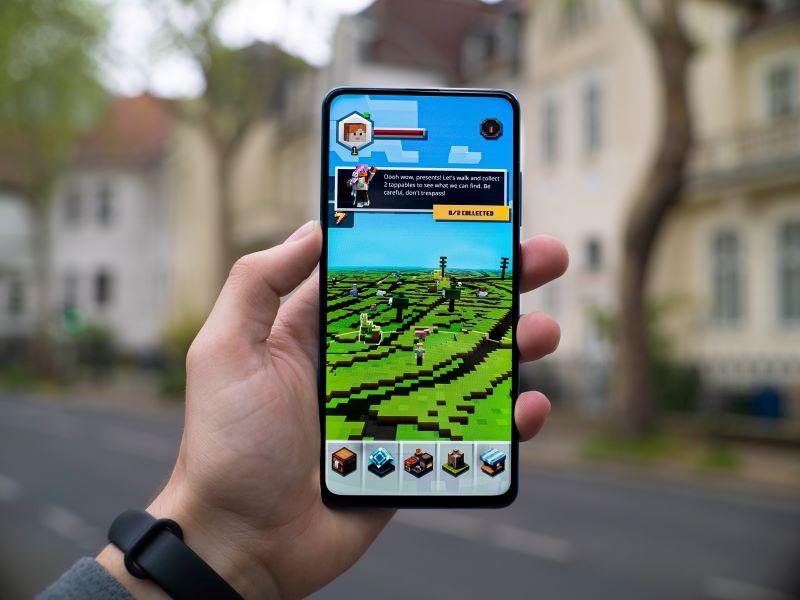For reasons that are painfully familiar, over the past two years almost all lecturers in higher education have been compelled to move their teaching into an online environment. While the road to online or hybrid environments was not without obstacles, for many this forceful change has also generated new insights and rekindled old ideas. Various forms of game-based learning, for instance, have been a great help in making our online teaching more engaging and effective.
One can think of simple interventions, such as quizzes, that interrupt recorded lectures or break-out rooms that mimic the traditional jigsaw technique. As other contributors to this platform have shown, more advanced games can also help students reflect on their learning process, aid students’ transition to university or function as a low-key setting for pastoral encounters. In this piece, I would like to reflect on the advantages and pitfalls of games as an alternative to so-called direct instruction.
- Ready, player one? How video games can help engage students
- Serious play: boosting engagement in online courses through games
- Slowing down earlier in the pandemic went well – so why speed back up?
My thoughts are born out of a concrete experiment. In the autumn of 2020, during the second wave of the pandemic, I redesigned a particular course by integrating its content into a commercial adaptative learning platform, Cerego. In the past, this first-year undergraduate class revolved around lectures dealing largely in theory plus seminars in which that theory was applied to concrete examples. Its traditional setup was only partially successful: the seminars often showed that many students had not imbibed the theoretical material to the extent that one would have hoped. Apprehensive about what the translation of these lectures into an online environment might entail, and keen not to waste this crisis, I took a completely new approach and turned to the format of an adaptative learning platform.
Within the new platform, students are presented with a scaffolded mix of short instructional items, audiovisual illustrative material and a host of exercises that allow them to memorise and apply concepts (flashcards, fill-in-the-blank questions, quizzes etc). Since memorisation relies on repetition, students cannot complete a set of exercises in one go: instead, they are prompted to return to the material on a regular basis until they reach a certain level of retention. The platform keeps track of students’ performance so that concepts with which they are struggling return more frequently.
In many ways, this experiment was successful. During the online seminars, students displayed a familiarity with theoretical concepts that allowed them to handle the concrete examples with confidence and, occasionally, even flair. Their questions about the theory were more targeted and their motivation to succeed was stronger. They also enjoyed the freedom to study the material at times that were convenient to themselves.
This environment also had a beneficial side effect on the seminars, where there was more time for in-depth discussions and reflection. The platform also countermanded the necessity of a summative exam: if students could show they had mastered the theory by reaching the set level, then there was no need to make them cram (a fact that enhanced their motivation to participate considerably). In short, this form of game-based learning achieved what it set out to do: enhance the general level of motivation and allow knowledge to be digested at a more regular pace, thus turning the seminars into deeper and more creative exchanges.
That said, I have also become more sceptical about certain features. From a pedagogical point of view, one might argue that this kind of tool exemplifies the culture of speed that is rampant in all areas of the academy (as in most other sectors of society). As a colleague and I argued in another piece on THE Campus, a slower academic environment is more conducive to creative work and to path-breaking insights, whereas an intense focus on productivity and output hinders deep thinking and creates the unwanted and unnecessary amounts of stress and anxiety that have led to high levels of burnout.
An adaptative learning platform that informs students daily how they are doing and reduces their learning into numbers is at first sight not an ally in the battle for a slower, more meaningful academic environment. There is a threat that its reminders become yet another source of distraction and another impulse that renders students incapable of sustained attention.
Of course, this threat becomes a danger only when the game’s demands become excessive. Used sparingly, it could create opportunities for moments of immersive thinking, such as the seminars. Additionally, with the right kind of framing it could even become a source of reflection about the culture of speed in general. In general, however, lecturers would be wise to use such a platform with caution and in close consultation with their colleagues so that the stream of impulses does not become a burden.
Indeed, for some students the weight of this burden may be heavier than for others, which brings me to a second point of critique. This kind of game relies on a very normative idea about cognitive faculties. While it takes into account correct and incorrect answers, its time schedule, based on the ideal time that a student would need to let concepts sink in, operates according to a standard algorithm. In reality, of course, no two students’ minds are the same, and while the majority of students may fall within the parameters of a normative ideal, a minority of neuro-divergent outliers will feel out of sync. For them, the cycle will be either too quick or too slow, too distracting or too immersive. As a result, in its present form, it can’t be said to be wholly and wholesomely inclusive. This issue is a technical one, however; one can imagine an environment that is more attuned to individual students’ rhythm and that adjusts itself accordingly.
On a more political note, the tool itself remains a commercial product, which has repercussions on its sustainability: one’s content disappears when the university’s licence expires. Furthermore, the rights on the metadata that are produced by students’ engagement can also become a bone of contention. Both factors are at play in my experiment: it seems likely that our university won’t be extending its licence because Cerego stores its data in the US (a fact we were not aware of when we began using the tool). Since it seems unlikely that this issue will be resolved, we may have to move to an open-source platform, which, in hindsight, is something we should have looked into sooner.
Finally, it bears pointing out that this game is geared towards lower cognitive levels – remembrance, application, understanding – and that its potential is by default limited. But games may also create experiences that appeal to higher-order analysis and reflection: in addition to the transitional and pastoral contexts mentioned above, they may create a virtual training ground for health professionals, reimagine a historical environment, prompt ethical and political thinking or allow students to experiment with narrative design.
For some teachers, using games in their teaching may conflict with the way they perform their role as a lecturer in class. Given that our students are growing up in a multimodal media environment, however, it seems imperative to meet them on their own terms as much as ours. In the moments that these games allow childlike creativity to reappear, they allow us and our students to understand and unravel how the real world works. Adaptative learning platforms may not give this experience, but they may be an important step along the way.
Frederik van Dam is assistant professor of European literature at Radboud University in the Netherlands. He is a member of the Radboud Young Academy, where he hopes to stimulate interdisciplinary collaboration in teaching as well as in research.
If you found this interesting and want advice and insight from academics and university staff delivered direct to your inbox each week, sign up for the THE Campus newsletter.




comment